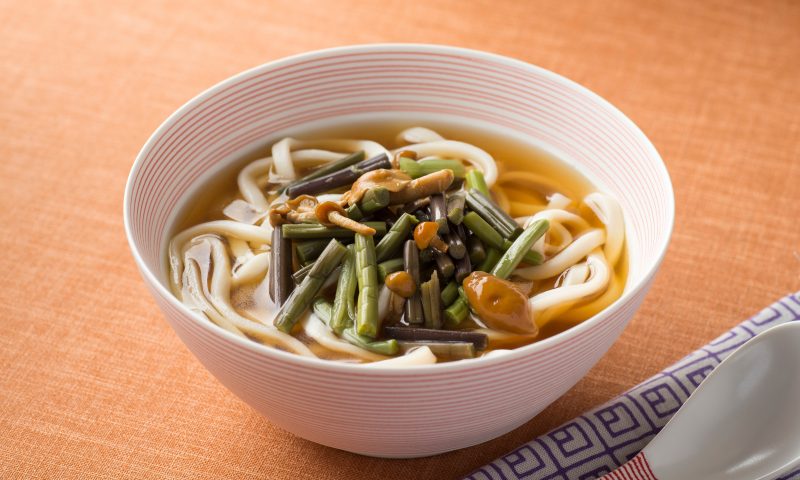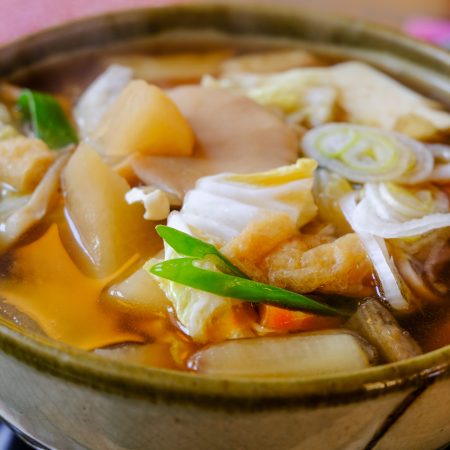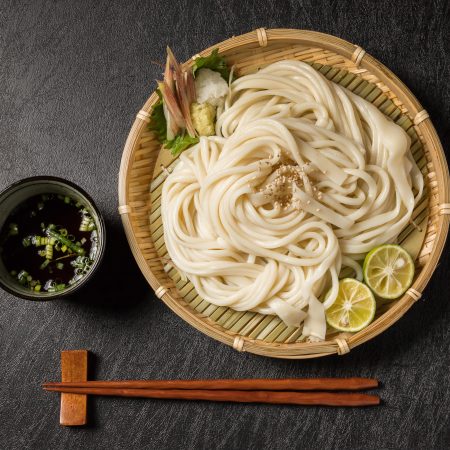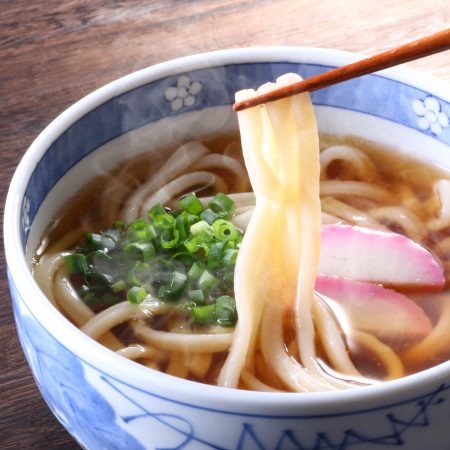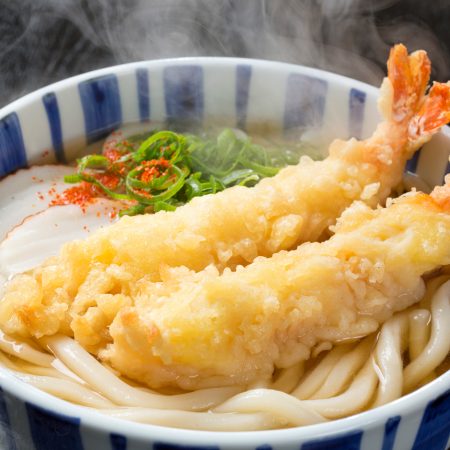“山菜うどん” (Sansai Udon) is a Japanese udon noodle dish that features wild edible plants (known as “sansai” in Japanese) as its primary ingredients. Here are the characteristics of Sansai Udon explained in detail:
Features of Sansai Udon:
- Type of Noodles: Sansai Udon typically uses udon noodles. Udon noodles are thick wheat noodles known for their chewy texture, making them a perfect match for the wild edible plants used in this dish.
- Use of Wild Edible Plants: The most distinctive feature of Sansai Udon is the use of wild edible plants as the main ingredients. Wild edible plants are gathered from mountains and natural environments, and the specific types used can vary depending on the season and region. Common examples of wild edible plants used in Sansai Udon include bamboo shoots (takenoko), bracken fern (warabi), butterbur sprouts (fuki no tō), ostrich fern fiddleheads (kogomi), mountain udo (yam-udo), and taranome (young angelica tree shoots). These wild plants provide a unique and flavorful element to the dish.
- Broth: The broth in Sansai Udon is typically based on dashi, a soup stock made from ingredients such as kombu (kelp) and katsuobushi (dried bonito flakes). The dashi is seasoned with soy sauce, mirin (sweet rice wine), salt, sugar, and other seasonings to create a flavorful soup. The broth complements the wild edible plants and enhances the overall taste of the dish.
- Toppings: In addition to wild edible plants, Sansai Udon may include various toppings and ingredients. Common toppings include chopped green onions, red pickled ginger, tenkasu (crispy bits of deep-fried tempura batter), nori (seaweed), or tempura (deep-fried vegetables or seafood). These toppings add different textures and flavors to the dish.
Sansai Udon is particularly popular in regions with abundant natural environments and is enjoyed during the spring and early summer when wild edible plants are in season. It offers a rich and seasonal dining experience with the unique flavors of wild plants.

